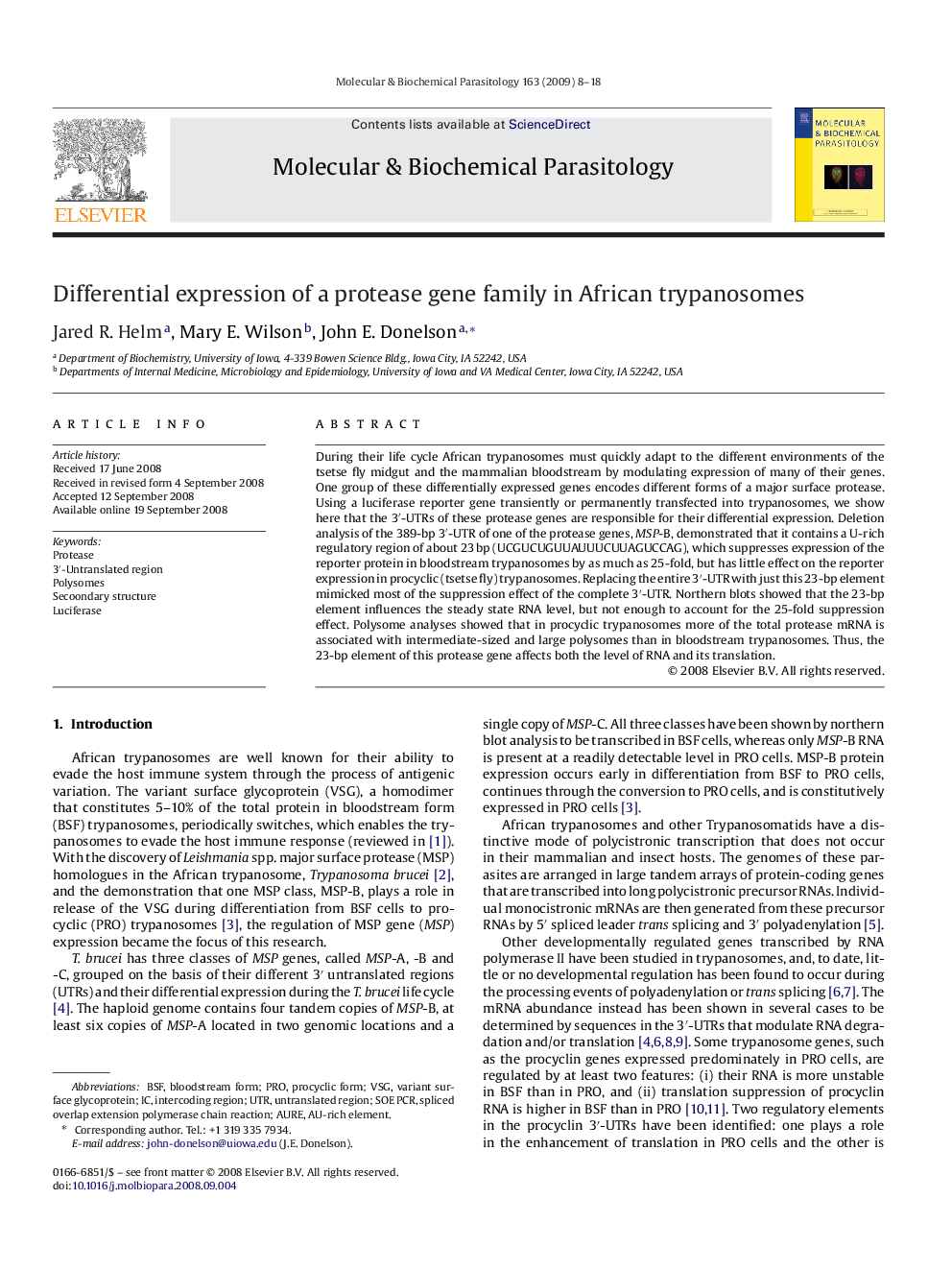| Article ID | Journal | Published Year | Pages | File Type |
|---|---|---|---|---|
| 2830081 | Molecular and Biochemical Parasitology | 2009 | 11 Pages |
During their life cycle African trypanosomes must quickly adapt to the different environments of the tsetse fly midgut and the mammalian bloodstream by modulating expression of many of their genes. One group of these differentially expressed genes encodes different forms of a major surface protease. Using a luciferase reporter gene transiently or permanently transfected into trypanosomes, we show here that the 3′-UTRs of these protease genes are responsible for their differential expression. Deletion analysis of the 389-bp 3′-UTR of one of the protease genes, MSP-B, demonstrated that it contains a U-rich regulatory region of about 23 bp (UCGUCUGUUAUUUCUUAGUCCAG), which suppresses expression of the reporter protein in bloodstream trypanosomes by as much as 25-fold, but has little effect on the reporter expression in procyclic (tsetse fly) trypanosomes. Replacing the entire 3′-UTR with just this 23-bp element mimicked most of the suppression effect of the complete 3′-UTR. Northern blots showed that the 23-bp element influences the steady state RNA level, but not enough to account for the 25-fold suppression effect. Polysome analyses showed that in procyclic trypanosomes more of the total protease mRNA is associated with intermediate-sized and large polysomes than in bloodstream trypanosomes. Thus, the 23-bp element of this protease gene affects both the level of RNA and its translation.
